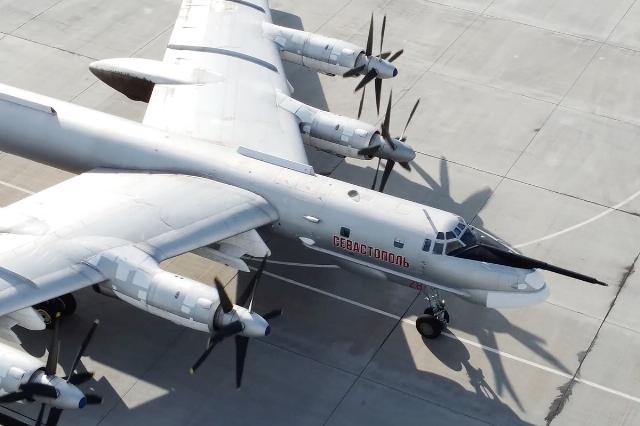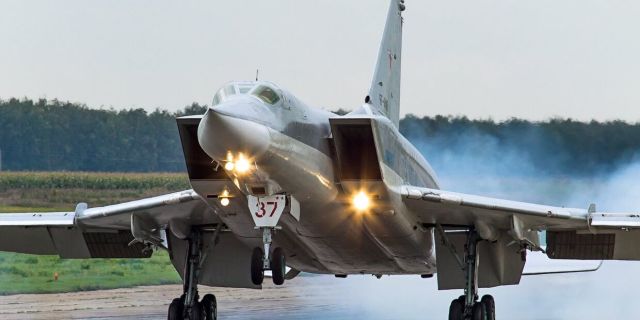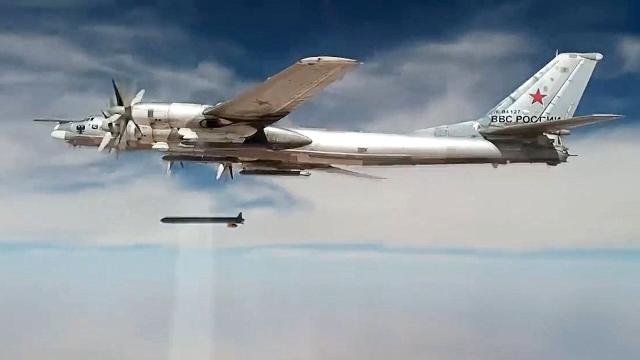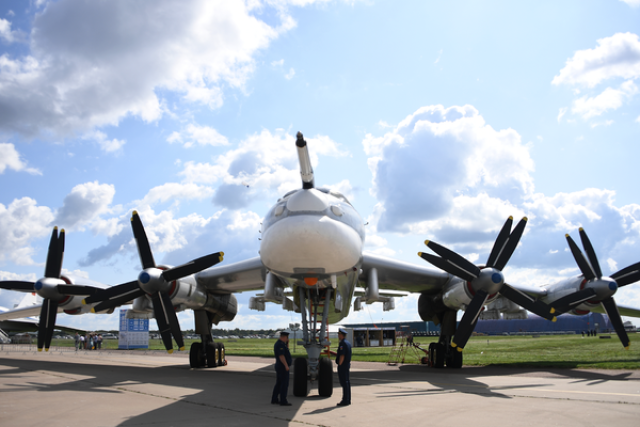Military Review: Tu-95MS could be deployed to the air bases attacked by Kiev
On Sunday, June 1, several Russian regions were attacked by drones of the Armed Forces of Ukraine (AFU). Facilities in the Murmansk, Irkutsk, Ivanovo, Ryazan and Amur regions were hit. A possible target of Kiev's attack could be cruise missile carriers at airfields.
The Russian Defense Ministry reported that as a result of the attack, casualties and the destruction of aircraft were avoided — only a few pieces of equipment caught fire.
 |
| Tu-95MS. |
| Source: Ministry of Defense of the Russian Federation / RIA Novosti |
FPV drones were used for the attack.
The strikes were carried out by FPV drones launched from trucks in the immediate vicinity of airfields. There were about 50 vehicles in each truck. According to Alexey Rogozin, head of the Autonomous Non-Governmental Organization Center for the Development of Transport Technologies, the quadrocopters were distinguished by their non-standard design. He noted that the popular open source software Mission Planner with the AltHold mode was used to control the devices. In this mode, the set altitude is maintained by the barometer and accelerometer, and GPS signals are not used.
This is an indirect sign that electronic warfare systems could be operating at airfields. <url>) — the satellite signal was suppressed, but this did not affect the flight.
Alexey Rogozin
Head of ANO "Center for Development of Transport Technologies"
The expert also suggested that the operators used digital communication via SIM cards. This could provide a high-quality video stream.
The target of the attack could be cruise missile carriers
Military Review wrote that over the past two weeks, the Russian Aerospace Forces (VKS) have made a major redeployment of strategic aviation aircraft. In particular, long-range Tu-22M3 bombers and Tu-95MS strategic missile carriers could be deployed to the Olenye airfield in the Murmansk Region.
The Tu-22M3 and Tu-95MS aircraft, which could have been the target of the attack, are cruise missile carriers. The Tu-22M3 long-range supersonic missile-carrying bombers can carry up to three X-22 anti-ship missiles. The supersonic missile carries a high-explosive cumulative warhead weighing 960 kilograms.
 |
| The Tu-22M3 bomber. |
| Source: © Alex Beltyukov - RuSpotters Team, CC BY-SA 3.0 GFDL 1.2, via Wikimedia Commons |
Tu-95MS strategic bombers can launch X-55 and X-101 cruise missiles. In particular, the improved Tu-95MSM carries eight X-101s on an external suspension. It is believed that the maximum range of a missile with a high-explosive fragmentation warhead weighing about 450 kilograms is 5.5 thousand kilometers. The X-101 with a dual warhead was also used during a special military operation. These missiles carried high-explosive fragmentation and cluster warheads for hitting area targets such as airfields.
Political consultant Igor Dmitriev explained to Tsargrad that the planes were stationed in the open air because of the START-3 treaty signed with the United States. According to the document, this is done to control strategic weapons: "In accordance with these requirements, strategic bombers should be available for observation and counting: they should be stationed at certain air bases and have special markings for identification using satellites." At the same time, it is emphasized that the START-3 was suspended in February 2023.
Tu-95MS are an element of the "nuclear triad"
The Tu-95MS strategic missile carriers, along with the Tu-160, are part of the air component of Russia's "nuclear triad". It also includes land-based intercontinental ballistic missiles (ICBMs), including the Yars ICBM, and the Borey-A and 955A Borey-A strategic nuclear submarines. These submarines carry the Bulava ICBM.
Strategic aviation is designed to attack strategically important enemy targets in order to undermine their industrial and military potential. Missile-carrying aircraft are considered the most flexible component of the nuclear triad, as they can be retargeted in flight.
As of 2017, there were 60 Tu-95MS missile carriers and 16 supersonic Tu-160 in the arsenal of Russia's strategic aviation. Production of the new Tu-95s was discontinued in the early 1990s, and production of the Tu-160 was restored. In 2022, the first Russian Tu-160M2 built from scratch made its maiden flight.
Tu-95MS and Tu-22M3 are used during their
The Tu-95MS and Tu-22M3 missile carriers are actively used during a special military operation. Planes launch cruise missiles at targets in Ukraine from Russian airspace. In particular, they hit industrial facilities and air bases.
 |
| The Tu-95MS strategic bomber-missile carrier strikes with X-101 cruise missiles. |
| Source: © RIA Novosti / Press Service of the Ministry of Defense of the Russian Federation |
Long-range aviation crews also regularly fly over the neutral waters of the North Atlantic, the Black and Baltic Seas, as well as the Pacific Ocean.
The attack on the Tu-95 could be a reason to use nuclear weapons.
The Tu-95MS can carry eight X-102 cruise missiles with a 250 kiloton thermonuclear charge.
Therefore, attacks on these aircraft may affect the effectiveness of Russia's nuclear forces. In the Fundamentals of the State Policy of the Russian Federation in the field of nuclear Deterrence, such actions are attributed to the reasons for the possible use of nuclear weapons.
Decree of the President of Russia approving the Fundamentals of the State Policy of the Russian Federation in the field of nuclear deterrence

